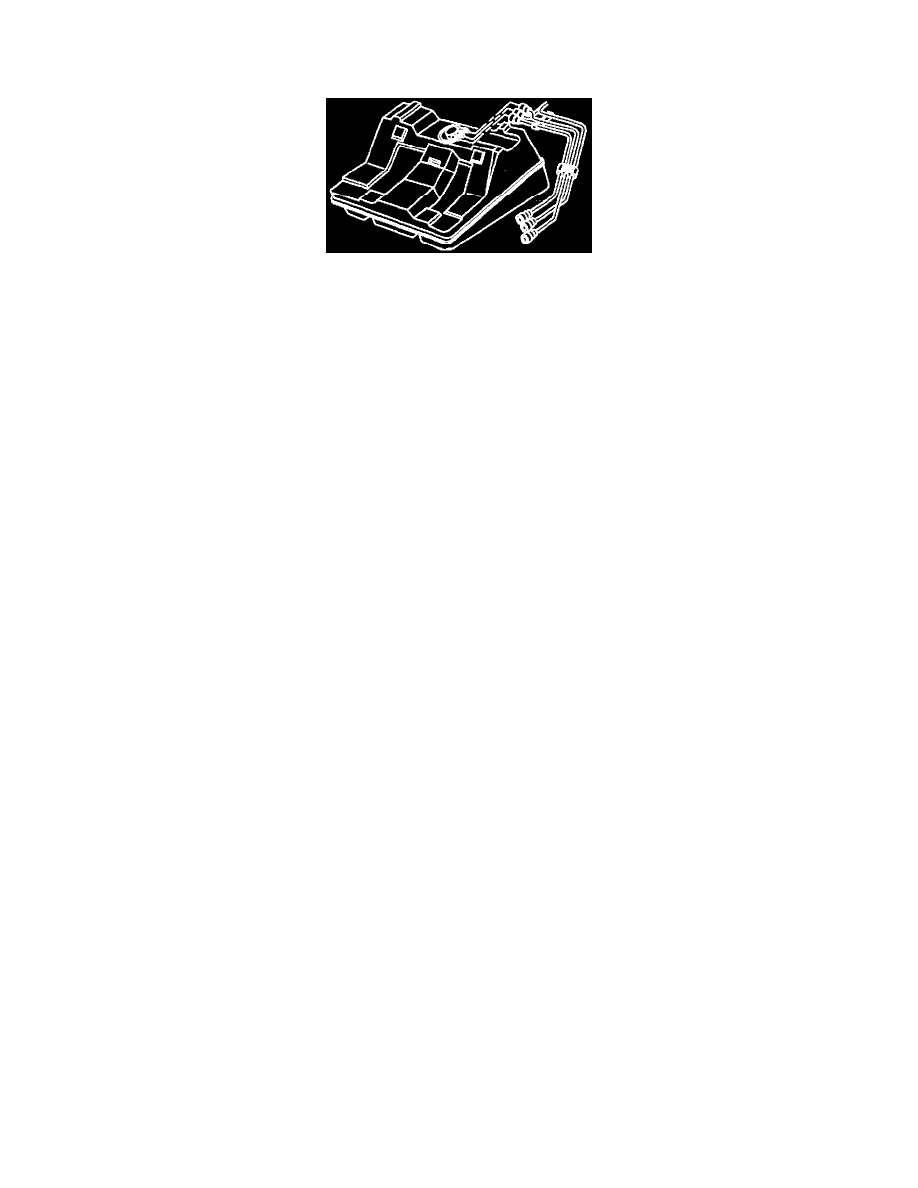Monte Carlo V6-3.8L VIN K (1998)

Fuel Supply Line: Service and Repair
Filter to Tank
Descriptive
WARNINGS: In order to Reduce the Risk of Fire and Personal Injury:
^
If nylon fuel pipes are nicked, scratched or damaged during installation, Do Not attempt to repair the sections of the nylon fuel pipes.
Replace them.
^
When installing new fuel pipes, Do Not hammer directly on the fuel harness body clips as it may damage the nylon pipes resulting in a
possible fuel leak.
^
Always cover nylon vapor pipes with a wet towel before using a torch near them. Also, never expose the vehicle to temperatures higher
than 115°C (239°F) for more than one hour, or more than 9O° (i94° for any extended period.
^
Before connecting fuel pipe fittings, always apply a few drops of clean engine oil to the male pipe ends. This will ensure proper
reconnection and prevent a possible fuel leak. (During normal operation, the O-rings located in the female connector will swell and may
prevent proper reconnection if not lubricated).
CAUTIONS:
-
Cap the fittings and plug the holes when servicing the fuel system in order to prevent dirt and other contaminants from entering the open pipes and
passages.
-
Always maintain cleanliness when servicing fuel system components.
REMOVAL PROCEDURE
1. Relieve the fuel system fuel pressure. Refer to Fuel Pressure Release Procedure.
2. Drain the fuel tank. Refer to Fuel Tank Draining Procedure.
3. Remove the fuel tank. Refer to Fuel Tank Replacement.
4. Remove the fuel feed, fuel return, and EVAP pipe quick-connect fittings at the fuel sender assembly. Refer to Fuel Line Coupler / Service and
Repair / Servicing Quick-Connect Fittings / With Metal Collar.
5. Cap the fuel sender fuel pipes and the in-pipe fuel filter pipes as needed to stop any fuel leakage.
6. Remove the fuel feed, fuel return, and EVAP pipe attaching hardware.
7. Remove the fuel feed, fuel return, and EVAP pipes.
8. Note the position of the fuel, and EVAP pipes and the fuel and EVAP pipe attaching hardware for installation.
INSTALLATION PROCEDURE
WARNING: In order to Reduce the Risk of Fire and Personal Injury: If nylon fuel pipes are nicked, scratched or damaged during installation,
they must be replaced.
CAUTIONS:
-
Always re-attach the fuel lines and fuel filter with all original type fasteners and hardware.
-
Do not repair sections of fuel pipes.
-
If fuel line bundle attaching hardware is damaged or broken replace it.
1. Install the new fuel feed, fuel return, and EVAP pipes and the fuel and EVAP pipe attaching hardware as noted during removal.
2. Remove the caps from the in-pipe fuel filter pipes and the fuel sender fuel pipes.
3. Install the fuel feed, fuel return, and EVAP pipe quick-connect fittings at the fuel sender assembly. Refer to Fuel Line Coupler / Service and
Repair / Servicing Quick-Connect Fittings / With Metal Collar.
4. Install the fuel tank. Refer to Fuel Tank Replacement.
5. Lower the vehicle.
6. Add fuel and install the fuel tank filler pipe cap.
7. Tighten the fuel tank filler pipe cap.
8. Install the negative battery cable.
9. Inspect for leaks.
9.1. Turn the ignition switch to the ON position for two seconds.
9.2. Turn the ignition switch to the OFF for ten seconds.
